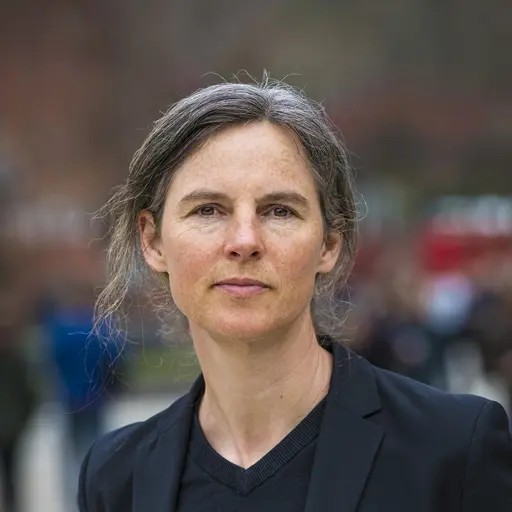The course syllabus contains changes
See changesCourse syllabus adopted 2022-02-17 by Head of Programme (or corresponding).
Overview
- Swedish nameDesignsystem
- CodeARK178
- Credits4.5 Credits
- OwnerMPDSD
- Education cycleSecond-cycle
- Main field of studyArchitecture, Architecture and Engineering
- DepartmentARCHITECTURE AND CIVIL ENGINEERING
- GradingTH - Pass with distinction (5), Pass with credit (4), Pass (3), Fail
Course round 1
- Teaching language English
- Application code 17124
- Maximum participants35
- Open for exchange studentsYes
- Only students with the course round in the programme overview.
Credit distribution
Module | Sp1 | Sp2 | Sp3 | Sp4 | Summer | Not Sp | Examination dates |
|---|---|---|---|---|---|---|---|
| 0122 Written and oral assignments 4.5 c Grading: TH | 4.5 c |
In programmes
Examiner
 Meta Berghauser Pont
Meta Berghauser Pont- Full Professor, Urban Design and Planning, Architecture and Civil Engineering
Eligibility
General entry requirements for Master's level (second cycle)Applicants enrolled in a programme at Chalmers where the course is included in the study programme are exempted from fulfilling the requirements above.
Specific entry requirements
English 6 (or by other approved means with the equivalent proficiency level)Applicants enrolled in a programme at Chalmers where the course is included in the study programme are exempted from fulfilling the requirements above.
Course specific prerequisites
Qualification for the master programme or Civil and Environmental Engineering or a Bachelor of Science in Industrial Design Engineering or Design, or Human Geography with a profile in planning.Aim
Buildings, neighbourhoods and cities are, besides local things, especially elements in an intertwined urban system. The components of a system are connected through networks. These are partly physical networks, such as rivers, roads, and railroads, but also include more abstract layers of social and economic networks. How cities are used, how they grow and change depends on the interaction between these networks. This might seem very complex and difficult to grasp, but if we remain close to the role of the architect in these matters, it comes down to better understanding location.Location creates opportunities for activities dependent on its position in the system. Urban activities such as workplaces, services, and housing, are to a large extent dependent on access to other activities and especially how this access is mediated through physical (transportation) networks. This can be described through accessibility in terms of both proximity and centrality which in turn can be used to discuss issues of co-presence, patterns of interaction and spatial inequality.
To gain a deeper understanding of the concept of 'location' and how it provides opportunities for activities depending on its position in the system, models are used. Such models can be either conceptual or also involve mathematical and algorithmic aspects that reveal the system dimension of location. In the course, we will use conceptual models to be able to describe location from a system perspective and to be able to engage with question about accessibility in terms of both proximity and centrality which in turn can be used to discuss issues of co-presence, patterns of human interaction and spatial inequality. The course is explorative and uses research by design to investigate how system thinking can be used in a design context.
Learning outcomes (after completion of the course the student should be able to)
- Understand system effects, the role of networks in systems, and its relevance for architecture.
- Discuss accessibility in terms of both proximity and centrality and how this can be used to discuss issues of co-presence, patterns of human interaction and spatial inequality.
- Apply the understanding of system effects in a design context.
Content
The course consists of lectures and seminars/workshops through which a variety of theories and methods in the field of systems thinking are presented, tested, and discussed. It includes weekly assignments where concepts are introduced and discussed in spatial terms to enable design explorations. We will work on three scales: city, neighborhood and building scale. At city scale, we discuss how the location of urban activities affect society. At neighborhood scale, the focus shifts to patterns of movement and for the building scale, we discuss human interaction in public buildings.Each week starts with the identification of location qualities where we distinct local qualities and contextual qualities. In the next step, we will dig deeper to understand the system effects and discuss tools for intervention. This will then be used to propose intervention in the system to change location.
Organisation
The course consists of lectures and seminars/workshops focusing on the city scale in week 1, neighborhood scale in week 2 and building scale in week 3. Each week includes three exercises that are introduced in a lecture and discussed during the seminars/workshops. For each week also one main text is provided that introduces the main theories and/or methods. At the end of each week, the work is presented orally and/or in written form.Literature
The compulsory literature will be discussed in the introductory lecture at the start of every week.Examination including compulsory elements
The grade is a weighted average of the following aspects:- Results: the result of the exercises for each week
- Communication and presentation (orally and in written form including illustrations)
- Attendance: less than 70% attendance pulls down the grade
- Attitude: active participation during the seminars/workshops
The course examiner may assess individual students in other ways than what is stated above if there are special reasons for doing so, for example if a student has a decision from Chalmers about disability study support.
The course syllabus contains changes
- Changes to course rounds:
- 2022-11-02: Max number of participants Max number of participants changed from 25 to 35 by UBS
[Course round 1]
- 2022-11-02: Max number of participants Max number of participants changed from 25 to 35 by UBS